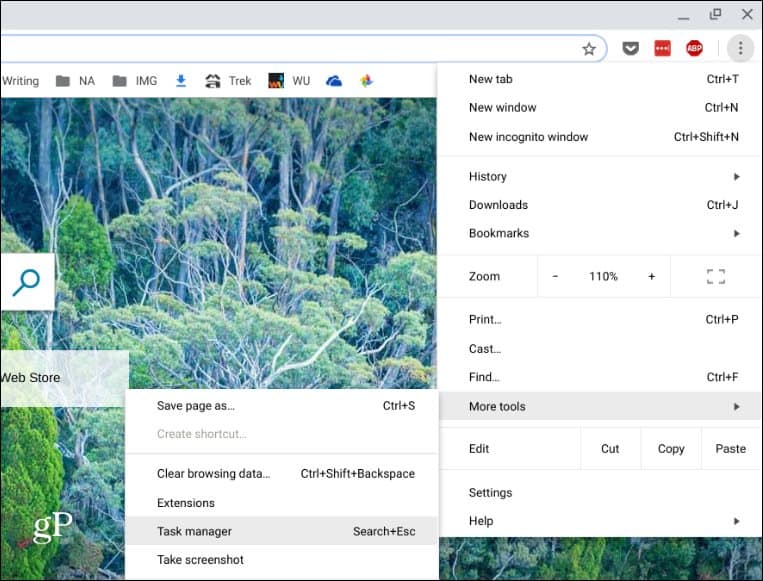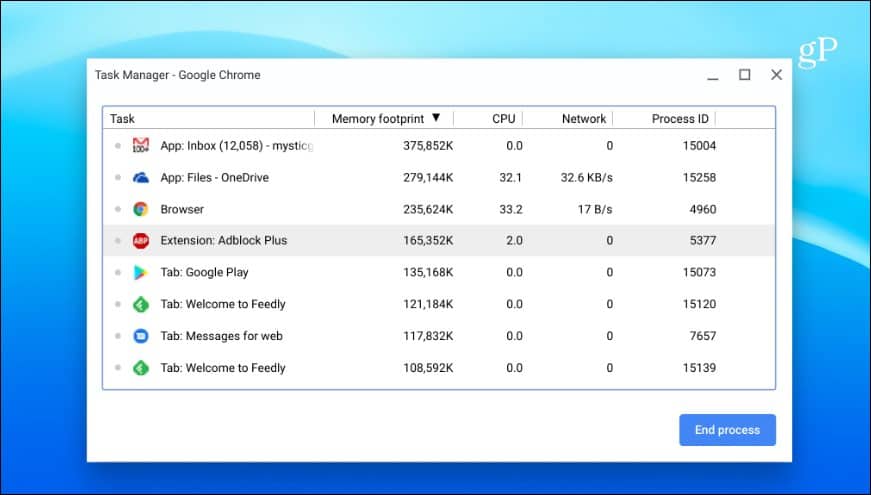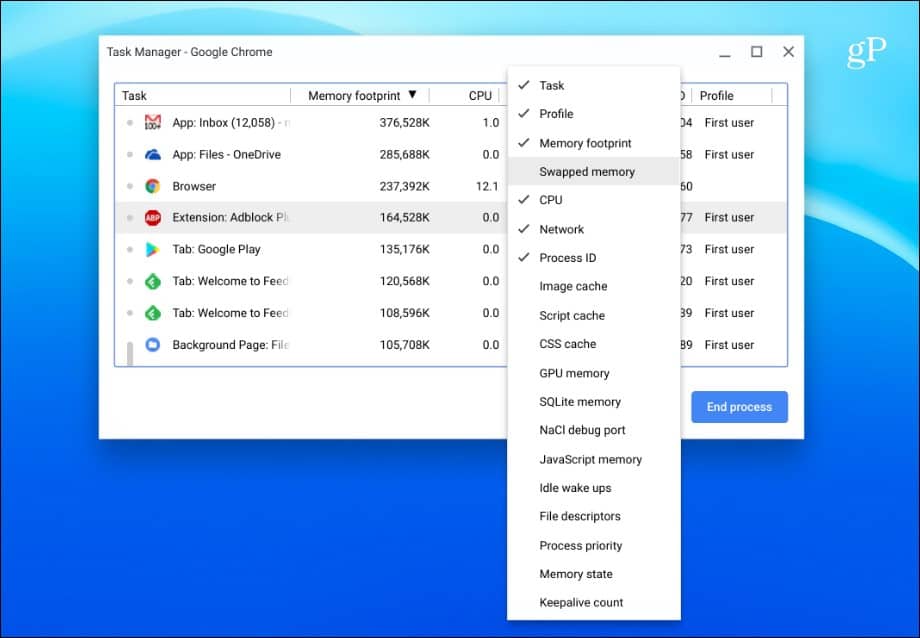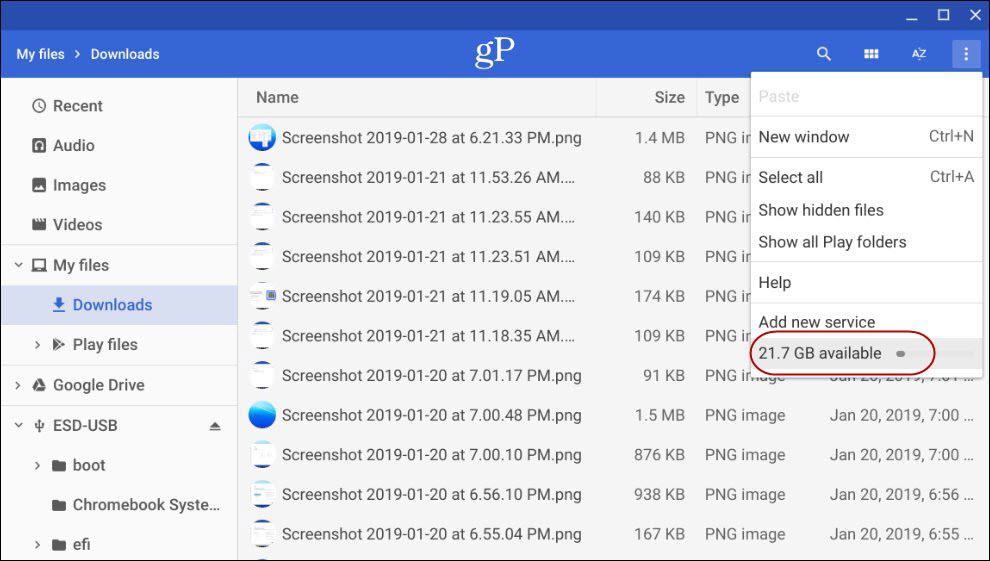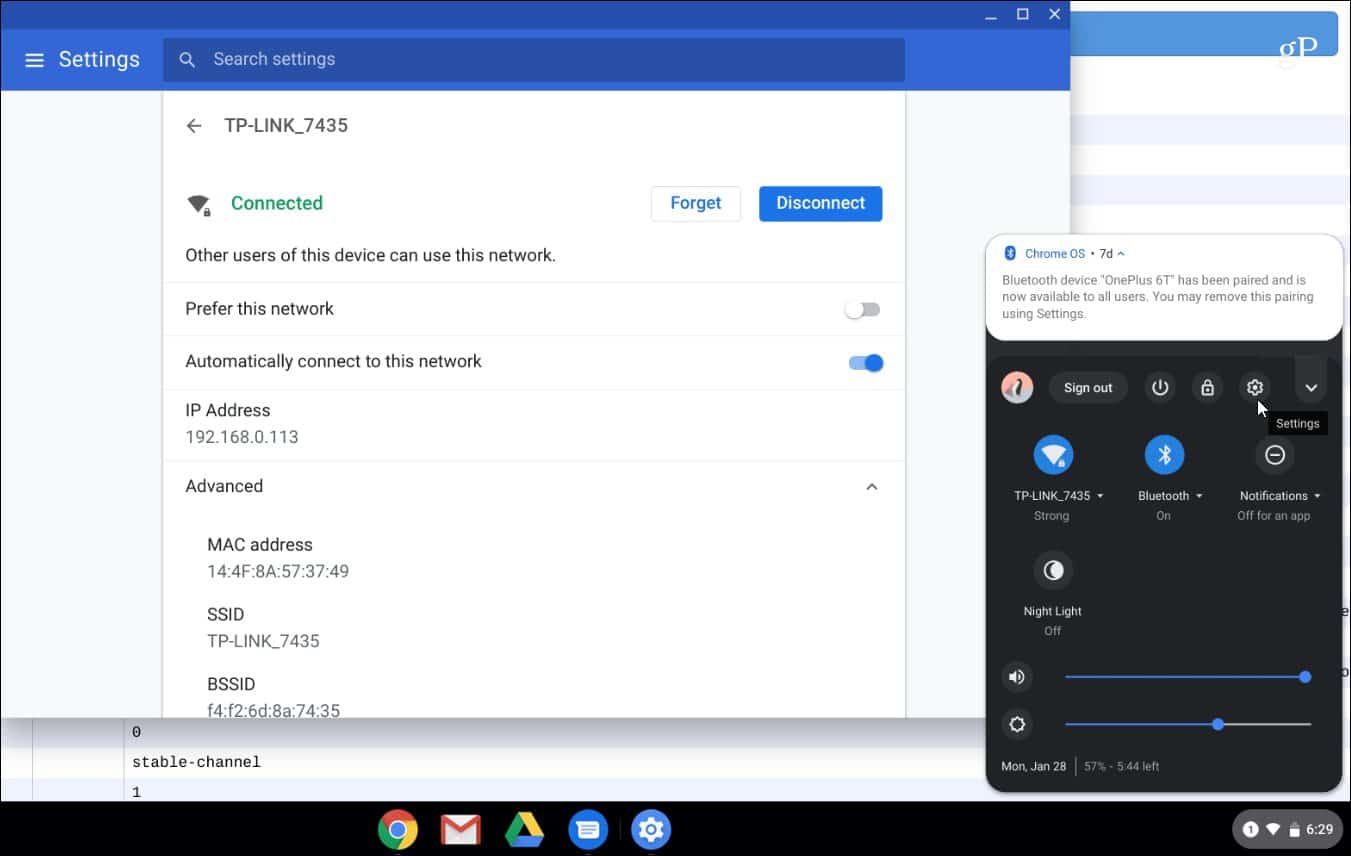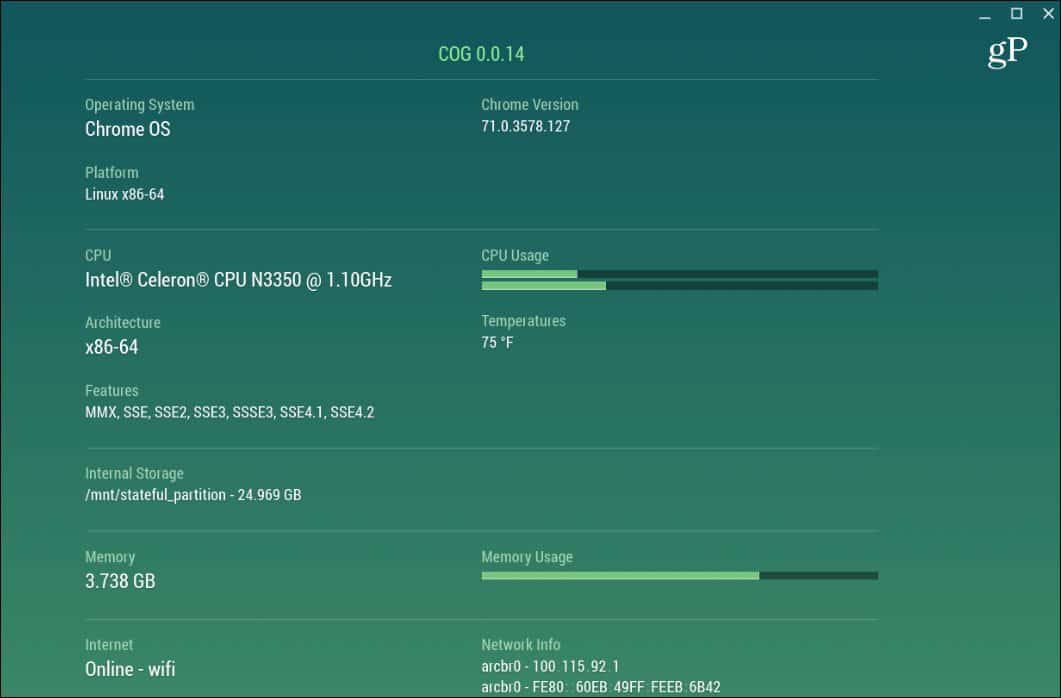However, they have come a long way over the years and can do much more. Newer models can run (some) Android apps and even Linux (if you want to get geeky). But unlike other operating systems, there isn’t an easy way to see your system’s hardware in Chrome OS, such as RAM, CPU, and Storage. There are a few different ways you can find out about what’s going on under the hood. Here’s a look at what info Chrome OS does offer and how you can get the hardware and system specs of your Chromebook.
Check Chromebook Hardware and System Specs
There is a task manager for Chrome OS. But it isn’t as sophisticated and detailed as Task Manager on Windows 10, for instance. To access it, click the menu button and choose More Tools > Task Manager.
That will bring up the task manager, which shows Memory, CPU, and Network use of tasks and running apps.
Also, similar to task manager on Windows 10, you can right-click on a column and add other categories you might need.
Use the System Page
You can find out a ton of system information on the System page. It’s not exactly user-friendly – it just shows text info – but does provide a lot of technical info about your Chromebook you might need to know. It displays info like the version of Chrome OS, network and hardware info. To access it, open a new tab and type: chrome://system and hit Enter.
Check Available Chromebook Storage
If you need to know how much storage space you have left on your Chromebook, you can easily find out. Open the Files app and click the menu button in the upper-right corner. At the bottom of the drop-down, you will see how much space is available. You can click on it to go to the Storage page and get additional information if you want.
Discover Your Chromebook’s Network Connection Info
If you need to know more information about the network you’re connected to, click the Settings icon on the system notification menu. Next, click the name of the network you’re connected to under the “Network” sections at the top. Click the Network connection again, and you will get details on the connection such as the IP and MAC address, signal strength, and more under the “Advanced” section.
Install a System Info App
Of course, if you want something more user-friendly, you might want to consider using an app. Just like Windows has great third-party system info apps like Speccy, you can find one for your Chromebook, too. You can find a system info utility in either the Chrome Web Store as a plug-in or an app in Google Play Store (if your Chromebook supports Android apps). For an extension, I recommend using COG System Info Viewer.
On the app side, there isn’t a real winner. You can try system info apps from the Play Store, CPU X works alright, but your mileage will vary. You probably don’t have the system specs of your Chromebook memorized. In fact, you shouldn’t because they are just meant to work. It’s not a gaming rig or power system with a bunch of VMs. But if you do need to know some of your system’s information for troubleshooting or whatever reason, now you know how to get what you need. its a cool app Comment Name * Email *
Δ Save my name and email and send me emails as new comments are made to this post.
![]()

